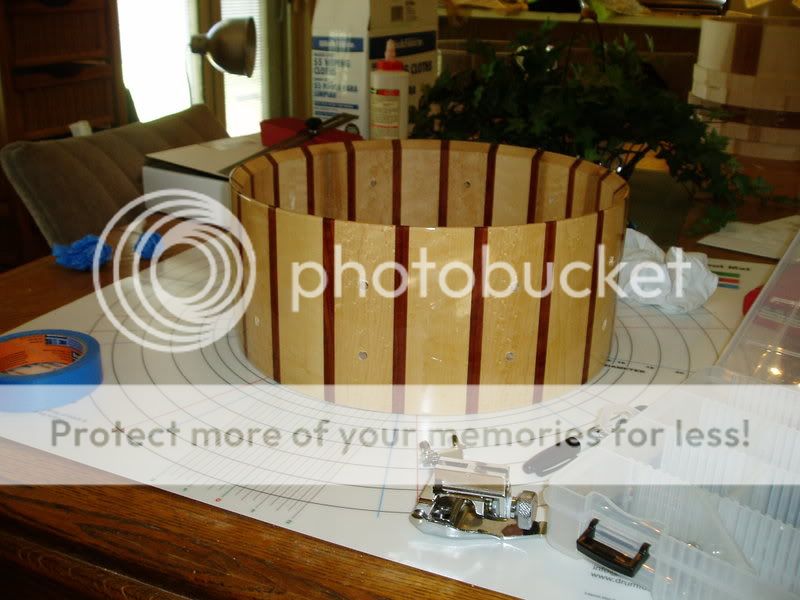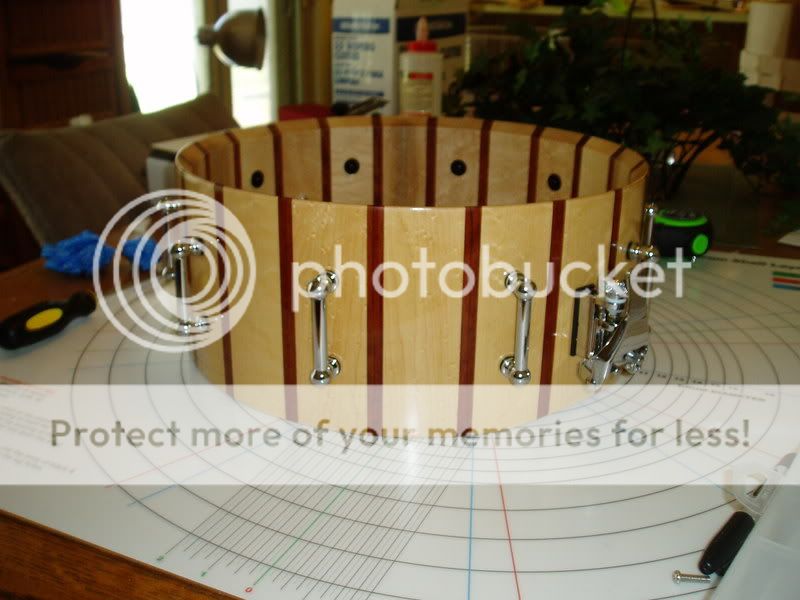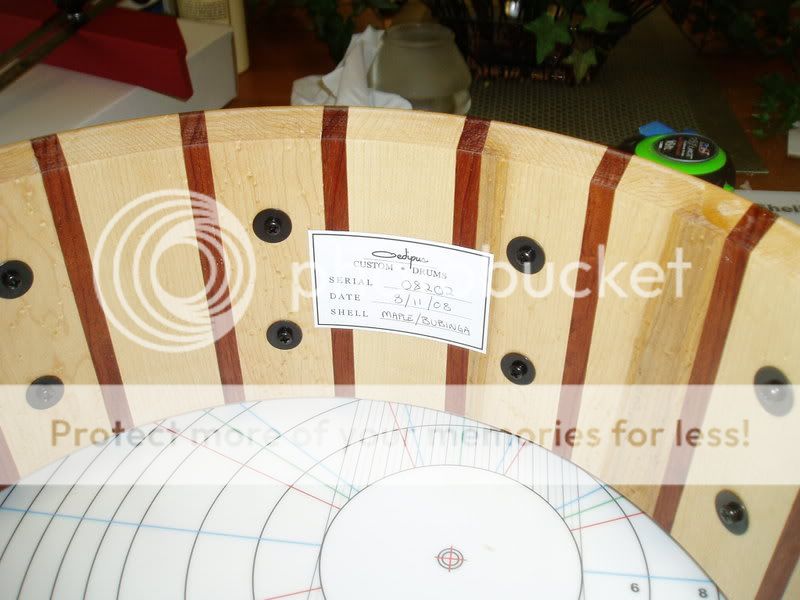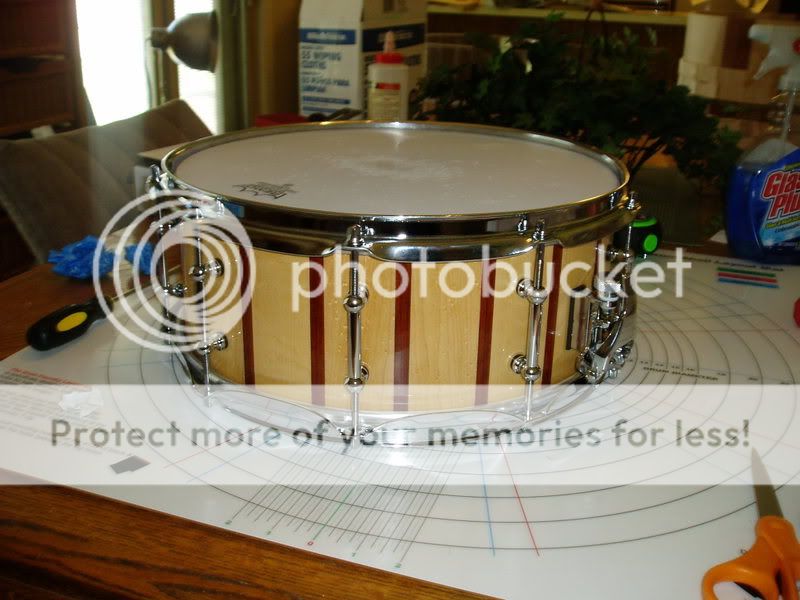The following comments are not meant to take away from Negadiv's work................
QUOTE......"
people would pay big bucks for that!"
Unfortunately, probably not. Due to the number of guys who are now building stave constructed shells, they have become almost common place.
QUOTE
......"This type of shell is actually less prone to warping than traditional ply drums are because the grain is in its natural alignment, its not stretched or bent at all so it's not trying to move."
Having spent a couple of years researching and learning, and then making ply shells, I'm afraid I have to disagree with your comments and whoever told that doesn't know shit!!!
Anyways, great job and I see you've used Drum Foundry's layout mat.













 .
.